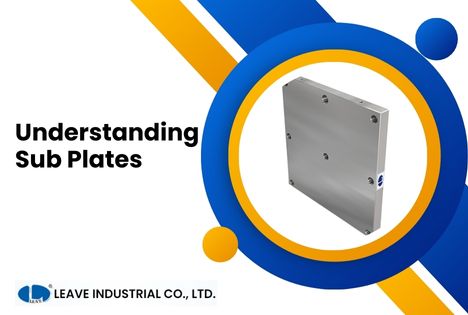Blog

Introduction
In precision machining, the setup efficiency and flexibility of your equipment can significantly impact productivity and accuracy. Sub plates play a crucial role in optimizing machining operations by enhancing the versatility and functionality of machine tables. This article explores the importance of sub plates in modern manufacturing environments and how they can benefit machining operations at LEAVE.
What is a Sub Plate?
A sub plate, also known as a fixture plate or adapter plate, is a thick, flat metal plate used as a mounting platform for workpieces and fixtures on machine tables. Typically made from high-grade aluminum or steel, sub plates are precision machined to ensure flatness and stability. They serve as an intermediate layer between the machine table and the tools or workpieces, providing a standardized and reconfigurable setup that facilitates quick changes and precise positioning.
Key Features of Sub Plates
Sub plates are designed with several features that enhance their utility in machining operations:
- ♦ Grid Pattern: Most sub plates feature a grid of threaded holes or T-slots, which allow for flexible positioning and secure attachment of fixtures and workpieces.
- ♦ Material Integrity: Constructed from durable materials that resist warping and wear, sub plates maintain structural integrity under the stress of machining operations.
- ♦ Customization: Sub plates can be custom machined to fit specific machines and applications, ensuring optimal compatibility and performance.
Advantages of Using Sub Plates
Incorporating sub plates into your machining setup offers numerous benefits:
- ♦ Increased Setup Speed: Quick and easy mounting of fixtures and workpieces on sub plates reduces setup time, allowing for faster transitions between jobs.
- ♦ Enhanced Precision: By providing a consistent and stable mounting surface, sub plates help maintain alignment and accuracy throughout the machining process.
- ♦ Improved Flexibility: The standardized hole grid or T-slots on sub plates enable operators to quickly reconfigure setups for different tasks, enhancing machine versatility.
- ♦ Protection for Machine Table: Sub plates act as a sacrificial barrier, protecting the machine table from damage during drilling or milling operations.
Applications of Sub Plates
Sub plates are used in a variety of machining contexts:
- ♦ CNC Machining: Ideal for CNC operations where precision and repeatability are paramount.
- ♦ Tool and Die Making: Sub plates provide a stable platform for crafting and modifying tools and dies.
- ♦ Batch Production: Enhances efficiency in high-volume production runs by simplifying the setup for repetitive tasks.
LEAVE's Sub Plates Series
LEAVE offers a comprehensive range of sub plates designed to meet diverse industrial needs. Our sub plate series includes the BP14, BP15, and BP19 models, each tailored to provide specific advantages in various machining environments.
- ♦ BP14: Made of Cast Iron FC300, the BP14 is a modular quick-change subplate designed to work in conjunction with the BP13. It is engineered to accept custom hole patterns for specialized jigs, enhancing versatility in machining setups.
- ♦ BP15: Constructed from Cast Iron FC300, normalized for heat treatment, and designed as a modular quick-change subplate. It features alignment bushings and thread inserts at every hole, facilitating easy adaptation to standardized jig components, enhancing versatility and precision in machining setups.
- ♦ BP19: Made of S45C/CK45, the BP19 is a multipurpose subplate designed to accept custom hole patterns for specialized jigs. Its robust construction and versatility make it ideal for a wide range of machining applications.
Choosing the Right Sub Plate for Your Needs
Selecting the appropriate sub plate involves considering several factors:
- ♦ Machine Compatibility: Ensure the sub plate fits the dimensions and specifications of your machine table.
- ♦ Material Requirements: Choose a material that can withstand the forces involved in your specific machining processes.
- ♦ Custom Features: Consider any custom features like additional fixtures, specific hole patterns, or unique coatings that may be necessary for your applications.
Conclusion
Sub plates are an invaluable addition to any machining setup, offering enhanced efficiency, accuracy, and flexibility. By understanding the role and benefits of sub plates, manufacturers can significantly improve their operational capabilities.
At LEAVE, we provide high-quality sub plates designed to meet the diverse needs of modern manufacturing. Explore our range of sub plates, including the BP14, BP15, and BP19 models, to discover how they can enhance your production efficiency and machining precision.
